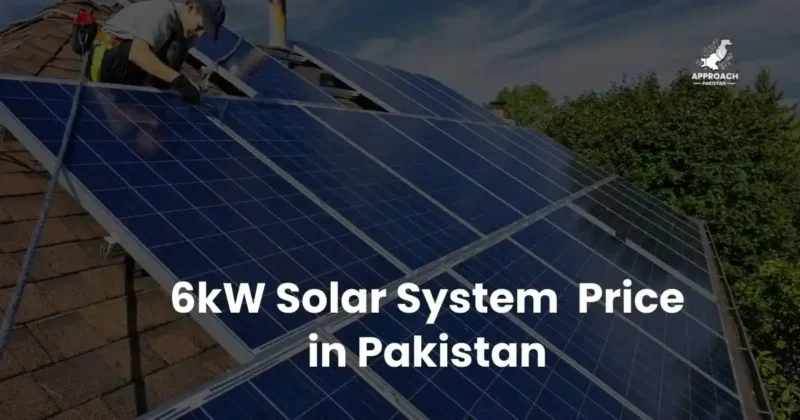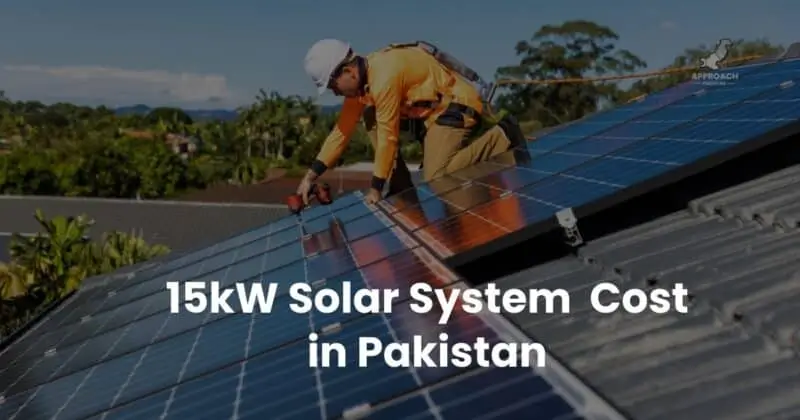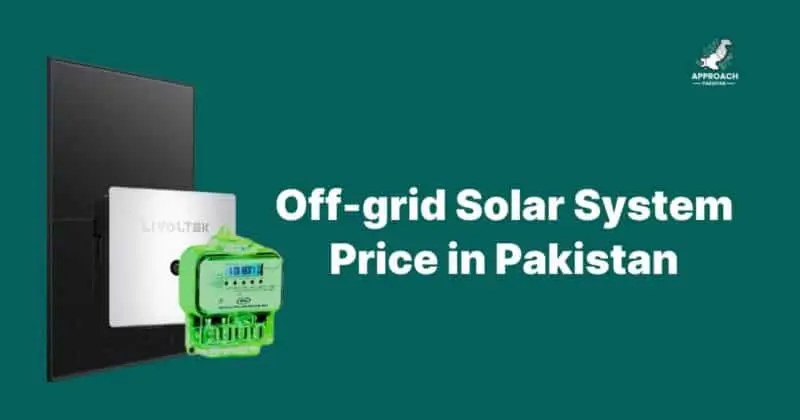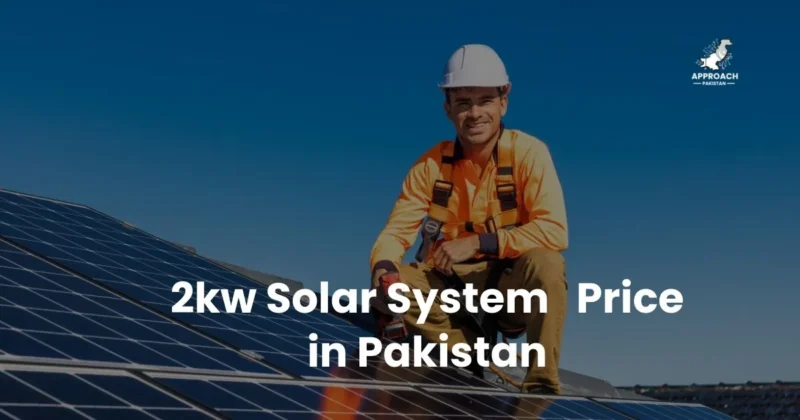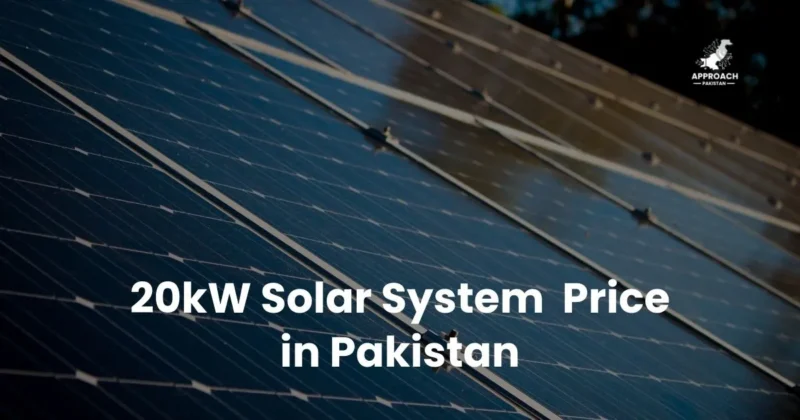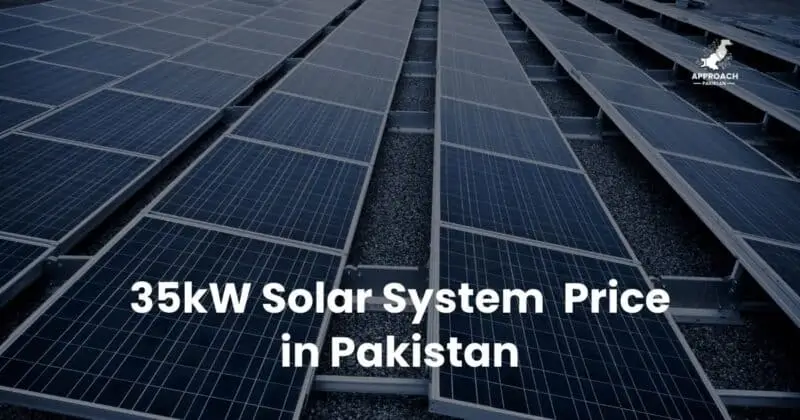12kw solar system price in Pakistan
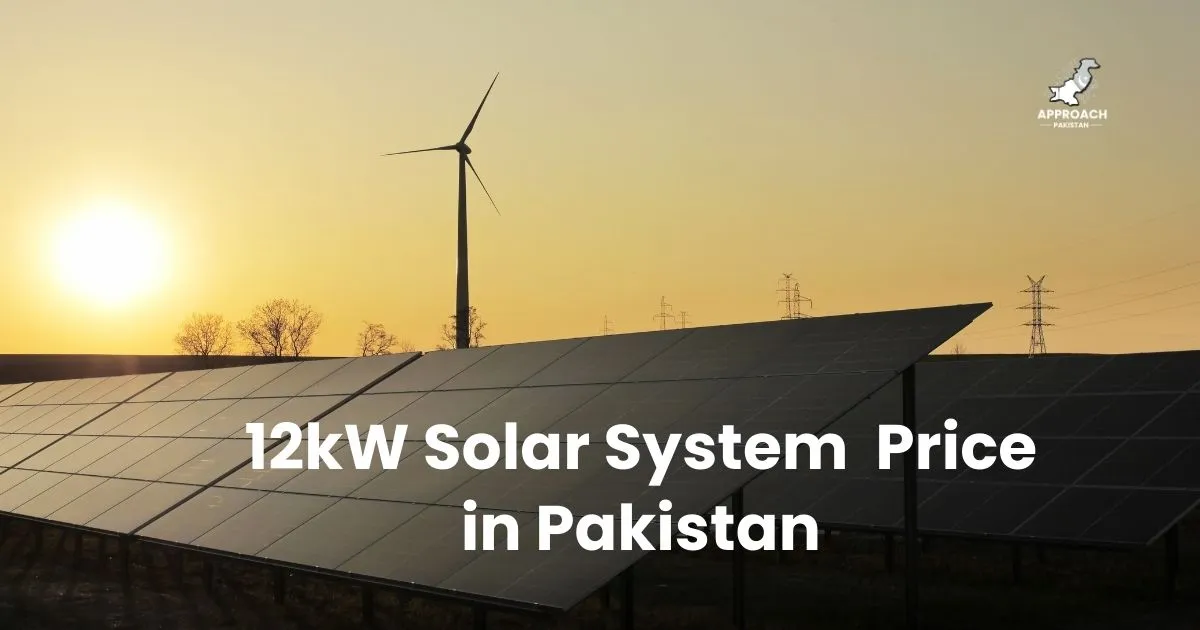
12kW solar system price in Pakistan ranges from PKR 1,150,000 to PKR 1,600,000 depending on system type and components. On-grid systems start at PKR 1,087,000, while hybrid systems with batteries cost PKR 1,307,000. The system generates 48-60 units daily, reducing electricity bills by 70-80%.
Are you tired of electricity bills that eat half your monthly salary? You’re not alone. Pakistani families face a brutal choice: pay crushing power bills or suffer through endless load shedding.
Your monthly electricity bill probably hits PKR 25,000 or more. That’s PKR 300,000 yearly – money that could buy a car or fund your child’s education. Meanwhile, grid failures leave you sweating in summer heat or struggling with work deadlines.
The confusion around solar pricing makes things worse. Every company quotes different rates. Hidden costs pop up during installation. You worry about buying the wrong system size or getting stuck with poor after-sales service.
But here’s the good news: a 12kW solar system can slash your bills by 80%. You’ll generate your own power and kiss load shedding goodbye. This guide gives you transparent pricing, honest comparisons, and real ROI calculations.
What is a 12kW Solar System?
A 12kW solar system generates 12 kilowatts of electricity per hour under optimal sunlight conditions. It typically includes 20-24 solar panels, producing 48-60 units daily and 1,440-1,800 units monthly, making it ideal for medium to large homes with 10-15 family members.
Think of 12kW as your home’s power plant. It’s like having 12 air conditioners running at full capacity – but instead of consuming power, it creates it.
The system works perfectly for homes running 4-5 ACs, multiple fans, refrigerators, washing machines, and lighting. You’ll power everything without watching the meter spin like a casino wheel.
Pakistani homes using 800-1,200 units monthly find 12kW systems hit the sweet spot. It’s not overkill like 20kW systems, yet powerful enough to handle your entire load.
12kW Solar System Price Breakdown in Pakistan
On-Grid System Pricing
On-grid 12kW systems start at PKR 1,087,000. You connect directly to the national grid without batteries. During sunny days, you sell excess power back through net metering.
Here’s the honest cost breakdown:
- Solar Panels (24 x 550W): PKR 408,000
- 12kW Grid-Tie Inverter: PKR 280,000
- Mounting Structure: PKR 150,000
- Installation & Accessories: PKR 249,000
Hybrid System Pricing
Hybrid systems cost PKR 1,307,000 because they include batteries. You get grid connection plus backup power during outages.
Complete hybrid breakdown:
- Solar Panels (24 x 550W): PKR 408,000
- 12kW Hybrid Inverter: PKR 355,000
- Tubular Batteries (4 x 185Ah): PKR 220,000
- Installation & Accessories: PKR 324,000
The extra PKR 220,000 buys you peace of mind. No more load shedding stress or spoiled food in your freezer.
Off-Grid System Pricing
Off-grid systems cost PKR 1,252,000. You’re completely independent from the grid. Perfect for remote areas or if you want total energy freedom.
Off-grid components:
- Charge Controllers & Accessories: PKR 194,000
- Solar Panels (24 x 550W): PKR 408,000
- 12kW Off-Grid Inverter: PKR 320,000
- Battery Bank (6 x 185Ah): PKR 330,000
Components & Technical Specifications of 12kW Solar System
Tier 1 Solar Panels
Tier 1 solar panels from Longi, Jinko, Canadian Solar, and Trina offer 21-22% efficiency with 25-year warranties. These panels cost PKR 17-19 per watt and generate maximum power even in Pakistan’s dusty conditions.
Longi panels lead the pack. Their monocrystalline cells handle heat better than cheaper alternatives. You’ll get consistent power output even when temperatures hit 45°C.
Jinko panels offer the best price-performance ratio. They’re built for harsh climates and resist degradation. After 25 years, they’ll still produce 80% of original power.
Canadian Solar panels excel in low-light conditions. Perfect for Punjab’s winter months when sunshine feels scarce.
Inverter Options
Your inverter choice determines system reliability. Goodwe inverters cost PKR 245,000 but offer 10-year warranties. Solis inverters are budget-friendly at PKR 225,000 with 5-year coverage.
Top inverter brands:
- Goodwe 12kW: PKR 245,000 (10-year warranty)
- Solis 12kW: PKR 225,000 (5-year warranty)
- Growatt 12kW: PKR 195,000 (10-year warranty)
- Inverex 12kW: PKR 870,000 (hybrid only)
Hybrid inverters cost more because they manage both grid power and batteries. They switch automatically during outages.
Battery Technology
Lithium batteries cost PKR 240,000-410,000 per 100Ah unit but last 10-15 years with 95% efficiency. Tubular batteries cost PKR 45,000-65,000 per 185Ah unit but need replacement every 3-5 years with 80% efficiency.
Lithium batteries make financial sense long-term. They charge faster, discharge deeper, and need minimal maintenance. Think iPhone vs old Nokia – both work, but one’s clearly superior.
Tubular batteries work if you’re budget-conscious. Phoenix, AGS, and Osaka brands offer reliable performance. Expect 3-4 years of solid service with proper maintenance.
Monthly Energy Generation Calculator
A 12kW system generates 48-60 units daily in optimal conditions, producing 1,440-1,800 units monthly. In Punjab’s climate, expect 1,500-1,650 units during summer and 1,200-1,400 units in winter months.
Peak generation happens from 10 AM to 3 PM. Your system produces maximum power when the sun hits panels at 90-degree angles.
Monthly generation by season:
- Summer (May-August): 1,600-1,800 units
- Monsoon (July-September): 1,200-1,400 units
- Winter (November-February): 1,200-1,500 units
- Spring (March-April): 1,500-1,700 units
Weather affects output significantly. Cloudy days drop production by 60-80%. Dust reduces efficiency by 15-20% without regular cleaning.
12kW System Installation Process & Timeline
12kW solar installation takes 3-5 days including site survey, permits, mounting, and commissioning. The process includes structural assessment, electrical connections, net metering setup, and system testing before final handover.
Day 1: Site survey and structural assessment. Engineers check roof strength and shading patterns. They plan panel layout for maximum efficiency.
Day 2-3: Panel mounting and DC wiring. Teams install mounting structures and position panels. Quality installers use stainless steel bolts and weatherproof connections.
Day 4: Inverter installation and AC connections. Electricians connect your system to the main distribution board. They install safety switches and monitoring equipment.
Day 5: Testing and commissioning. Engineers verify system performance and grid connection. You receive training on monitoring and basic maintenance.
Net metering approval takes 2-4 weeks separately. Start the application process before installation to avoid delays.s.
12kW Solar System ROI & Payback Period Calculation
12kW systems typically pay for themselves in 2.5-3.5 years through electricity bill savings. With current tariff rates of PKR 35-45 per unit, monthly savings range from PKR 30,000-45,000, generating PKR 360,000-540,000 annual savings.
Let’s crunch real numbers. If your current bill hits PKR 35,000 monthly, you’re spending PKR 420,000 yearly. A 12kW system costs PKR 1,300,000 but saves PKR 350,000+ annually.
Payback calculation:
- System cost: PKR 1,300,000
- Annual savings: PKR 350,000
- Payback period: 3.7 years
- 20-year profit: PKR 5,700,000
After payback, it’s pure profit. Your system runs for 25+ years with minimal maintenance costs. That’s 20+ years of free electricity worth millions. output by 60-80%, while dust can decrease efficiency by 15-20% without regular cleaning.
Load Assessment & Appliance Coverage
Complete Appliance Compatibility
A 10KW system can simultaneously power:
- 3 x 1.5-ton inverter ACs
- 15 x ceiling fans
- 20 x LED lights
- 2 x refrigerators
- 2 x LED TVs
- 1 x washing machine
- 1 x water pump
- 1 x iron (when ACs are off)
Load Balancing Strategies
Smart load management maximizes your system’s effectiveness. Run heavy appliances during peak solar hours (10 AM – 3 PM) when production is highest.
Stagger AC usage across rooms rather than running all simultaneously. This spreads the load and reduces strain on your system.
Brand Comparisons in 12kW Solar Systems
Solar Panel Manufacturers
Longi HiMo panels offer highest efficiency at 22.3% but cost PKR 31 per watt. Trina panels provide best value at PKR 29 per watt with 21.8% efficiency. Jinko panels balance performance and price at PKR 36 per watt.
Performance comparison:
- Longi: 22.3% efficiency, 30-year warranty, PKR 31/watt
- Jinko: 21.9% efficiency, 25-year warranty, PKR 36/watt
- Trina: 21.8% efficiency, 25-year warranty, PKR 29/watt
- Canadian: 21.5% efficiency, 25-year warranty, PKR 36/watt
All Tier 1 brands perform well in Pakistan’s climate. Your choice depends on budget and warranty preferences. Longi costs more but offers superior heat tolerance.
Inverter Brand Analysis
Goodwe inverters offer best reliability with 10-year warranties and 98.5% efficiency. Growatt provides excellent value at lower prices. Solis inverters work well for budget-conscious buyers.
Inverter comparison:
- Goodwe: 98.5% efficiency, 10-year warranty, PKR 245,000
- Growatt: 98.2% efficiency, 10-year warranty, PKR 195,000
- Solis: 98.0% efficiency, 5-year warranty, PKR 225,000
- Huawei: 98.6% efficiency, 10-year warranty, PKR 320,000
Chinese brands dominate the market. European inverters cost 50-100% more without significant performance gains. Stick with established Chinese manufacturers for best value.
Regional Considerations for Pakistan
Climate Impact on Performance
Pakistani climate affects solar performance significantly. Summer heat reduces panel efficiency by 10-15%, while winter dust storms can drop output by 20%. Monsoon season creates 40-60% generation decreases during cloudy periods.
Regional performance factors:
- Punjab: Excellent sunshine, moderate dust
- Sindh: High sunshine, extreme heat affects efficiency
- KPK: Good sunshine, winter snow in northern areas
- Balochistan: Exceptional sunshine, severe dust storms
Your location determines cleaning frequency and mounting angle optimization. Lahore needs monthly cleaning, while Karachi requires bi-weekly attention during dusty months.
Local Installation Standards
Pakistani installation standards require earthing systems, surge protection devices, and AC/DC disconnects. Quality installers use galvanized mounting structures and weatherproof electrical connections rated for local conditions.
Cheap installations skip essential safety features. Proper earthing protects against lightning strikes. Surge protection devices prevent grid fluctuation damage.
Mounting structures must handle 120+ km/h wind speeds. Galvanized steel resists corrosion better than aluminum in coastal areas.
For professional installation services in your area, see our Punjab solar installation guide that covers local requirements and certified installer networks.
Common Mistakes to Avoid
Sizing Errors
Oversizing wastes money while undersizing creates frustration. Calculate actual consumption from 12 months of bills, then add 20% for future growth. Don’t rely on single-month estimates or sales pressure tactics.
Many customers buy 15kW systems when 10kW would suffice. Extra capacity costs PKR 300,000+ without proportional benefits. Right-sizing saves money and improves ROI.
Undersizing is equally problematic. You’ll still have electricity bills and limited backup power. Add 20% buffer for appliance additions and consumption growth.
Quality Compromises
Choosing cheapest quotes often costs more long-term. Poor quality panels degrade faster, cheap inverters fail frequently, and amateur installation creates safety hazards. Focus on value rather than lowest price.
PKR 100,000 savings on components can cost PKR 500,000 in lost generation and repairs. Quality components maintain performance and warranty coverage.
Amateur installers create roof leaks, electrical fires, and system failures. Hire certified professionals with proper insurance and warranties.
Financing Traps
High-interest financing can double system costs. Compare total payments rather than monthly amounts. Some companies inflate prices for installment buyers while offering cash discounts.
18% annual interest doubles your system cost over 5 years. Cash purchases or low-interest bank loans provide better economics.
Read financing contracts carefully. Some include maintenance clauses that void warranties if you use other service providers.

